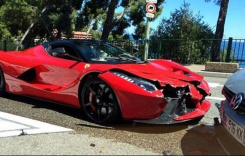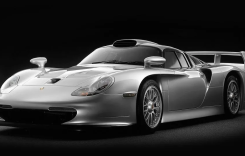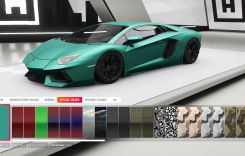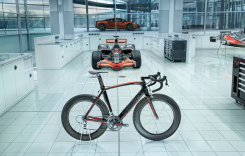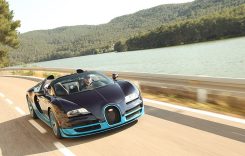Honda wants to attract new riders and it’s doing it with its revamped dual-sport, the CRF250L. This bike borrows the smooth-running 250cc thumper from the CBR250R sportbike and puts it inside a more adult sized frame with a smaller rider-friendly seat. Carrying a price of $4809 (with destination charge), the Honda is the most affordable bike in this category.

At a standstill it’s hard to argue against the Honda’s appearance. It has a clean shape and shares the sharp lines of the CRF450Rs that Supercross racers Trey Canard and Justin Barcia fly around on inside stadiums across America. We especially like the look of the exposed engine and how the engine’s plumbing and wiring is hidden from sight.
“The Honda is one good looking bike,” says Digital Media Producer Ray Gauger. “It definitely looks more expensive than what its price leads you to believe. They didn’t skimp on the quality either. It’s a solid bike.”
Swing a leg over the red bike and each one of us had both feet firmly planted on the ground. The CRF offers the lowest seat height of the group (34.7 in.), almost an inch lower than the Kawi and nearly two less than the WR. This will be a big, big plus for the vertically challenged. Though on the flip side it’s not as well suited to riders taller than six-foot, especially when the rider has to stand on the footpegs off-road (more on that later). The position and bend of the handlebar is relaxed and not too high or low and a good base to work from. A trip to the scale reveals that the CRF is indeed the heaviest, weighing in at 320 pounds. However, you’d be hard pressed to feel the extra weight at a standstill, or in motion.

Press the starter button and the Honda’s engine fires right away, whether your iPhone’s weather app says its 45 degrees or 95 degrees outside. The fuel-injected engine runs crisply even when cold and can be ridden away immediately. The clutch’s light action and smooth, hiccup-free motor performance make getting off and moving a no nonsense affair. Instrumentation is easy to read and we love that it offers the convenience of a fuel gauge to keep better tabs on the two-gallon fuel tank—a feature that is missing on both the Kawasaki and Yamaha.
On the road the CRF gets the job done without fuss. The seat is the coziest of the lot and although it offers sufficient get-up-and-go it still takes the most time to arrive at 60 mph (8.6 seconds). The overall character of the engine is mellow and more sanitized-feeling than the other 250s. Noise conscience riders will appreciate the muted neighbor-friendly exhaust note (72 dB at idle and 86 dB at half throttle) but for those who are looking for more playfulness the Honda comes up a bit short.
Results from dyno testing show the Honda’s engine produces just a hair more peak torque than the green machine (13.59 lb-ft), but it’s still down slightly against the WR. Numbers are a great reference but looking at the dyno graph paints a clear picture. Maximum force arrives at a relatively low rpm and stays online longer. This makes the Honda’s engine peppier right where you need it on the street. In terms of horsepower the Honda is right there with the KLX but still over 25% behind the Yamaha (measured peak to peak).
(Left) While plenty powerful the Honda’s front brake lacks a degree of feel which makes it trickery to modulate on slippery surfaces. (Center) Engine power is exceptionally smooth and there is a good amount of mid-range power which is perfect for street duty. (Right) Although it offers the lowest seat height the close proximity of the footpegs and seat make it more difficult for taller riders to stand on the footpegs.
Since it belts out the fewest number of ponies and carries the heaviest load, its slowest quarter mile (16.94 seconds @ 75.13 mph) isn’t a surprise. But its more moderate engine performance does pay dividends at the pump with it yielding the highest fuel mpg figure (64). That nets a 128-mile range based on the capacity of the gas tank.
“The Honda has one of the smoothest engines of any bike I’ve ridden,” reveals Joseph Agustin, MotoUSA’s latest addition to the digital media team, who has some street experience but very little when the pavement ends. “It made it easier to control especially when I was out of my comfort zone on some of the trails.”
While the Honda’s mild manners paid off in Agustin’s hands, for a more experienced dirt rider like Gauger, the muted powerband made it more challenging to ride at a quick clip.
(Top) The CRF250L offers superior instrumentation and it’s the only 250 to offer the convenience of a fuel gauge. (Center) The Honda’s seat proved to be the most comfortable and street oriented. (Bottom) We applaud Honda for producing an affordable dual-sport that can take riders off the grid and explore Mother Nature.
“Smooth power is what the Honda’s all about no question and it’ll be a big hit with new riders. On the road it performs just fine for pretty much anyone. Problem is it just doesn’t have any ‘snap’ which makes it trickier to ride in some areas say if you’re trying to hop the front wheel over rocks. The big space between second and third gear doesn’t help things either, so you have to decide whether to keep the engine screaming in second gear or lugging in third when climbing steeper hills or riding on softer dirt.”
Another strike against the CRF’s dirt resume is the way the bike’s suspension effects handling. Since the shock has so much sag (it’s clearly visible how rearward biased the attitude of the bike is when the rider is seated) the chassis has a harder time holding a line in a corner and the front tire doesn’t have enough weight on it to get grip. Scooting your body toward the fuel tank and keeping your torso over the front end certainly helps but isn’t a cure all. Of course, we’re nit-picking, but it’s definitely an issue if you do any degree of spirited riding off-road. Adding preload to the shock could have alleviated the condition but the supplied toolkit doesn’t offer any provisions for making the adjustment on the trail. The CRF’s ergos, specifically how low the seat is in relation to the footpegs, also hindered performance for us taller folks as it makes it harder to stand up—something that is necessary when negotiating rough terrain or trying to raise the front wheel over obstacles.
We also weren’t as satisfied with the performance of the front brake. It provides reduced lever feel, which made it trickery to modulate on rocks or slippery surfaces. Still it proved effective in terms of outright stopping power on pavement with the red bike halting from 60 mph in a distance of 121 feet—just a foot behind the Kawasaki and three behind the WR. The rear brake, however, performed flawlessly and was as good as anything in its class.
After burning through a couple tanks of gas it’s clear the Honda is oriented to beginners. While its engine delivers a smooth, hit-free spread of power, the motor is missing that hearty, grin inducing character that’s at the core of riding a motorcycle. Despite its mundane acceleration, on the road the CRF does what it’s supposed to: It scoots around town with minimal effort and delivers a simple, worry-free ride. Off-road, however, the overly soft rear suspension paired with the engine’s wide gear ratios make it more challenging to ride.
While we applaud Honda’s effort at capturing fresh faces, the CRF250L lacks the muscle to challenge the class leaders. Its road-oriented seating position and handling make it a great choice for smaller folks, but not the ideal platform for those that seek visceral thrill and performance. It’s these reasons why the Honda finishes in third-place in spite of being the best value.

